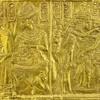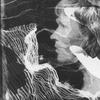MISSISSIPPI MUSEUM OF ART ANNOUNCES NEW ACQUISITIONS
- JACKSON, Mississippi
- /
- May 01, 2018
The Mississippi Museum of Art (the Museum) today announced a slate of important new acquisitions of contemporary artworks recently added to the collection. These acquisitions support the Museum’s mission of engaging Mississippians with visual art and further its commitment to stimulating arts-based community dialogue to investigate issues of local and national significance. The new acquisitions augment the work of the Center for Art & Public Exchange (CAPE), a new initiative at the Museum with a mandate to use original artworks, exhibitions, programs, and engagements with artists to increase understanding and inspire new narratives in and about contemporary Mississippi.
The acquisitions include: Benny Andrews (1930‒2006), Mississippi River Bank (Trail of Tears Series), 2005; McArthur Binion (b.1946), DNA: Black Painting: IV, 2015; Jeffrey Gibson (b.1972), Sharecropper, 2015; Titus Kaphar (b.1976), Darker Than Cotton, 2018; Glenn Ligon (b.1960) Condition Report, 2000; Deborah Luster (b.1951), six gelatin silver prints from the series One Big Self: Prisoners of Louisiana, 1999‒2001; Toyin Ojih Odutola (b.1985), The Engagement, 2015; Noah Saterstrom (b.1974), Road to Shubuta, 2016; and Hank Willis Thomas (b.1976), Flying Geese, 2012.
“Our role as a museum is to collect and display art that creates opportunities for personal discovery and deeper understanding,” said Betsy Bradley, Director of the Mississippi Museum of Art. “Each one of these artworks was selected because of its power to elucidate meaning for our audiences, for its ability to serve as a lasting catalyst for dialogue, and for its responsiveness to experiences that define modern life in Mississippi and the nation.”
The new acquisitions were made possible with funds from the W.K. Kellogg Foundation as a component of the work of the Center for Art & Public Exchange, the Collector’s Club Fund, the Franks Fund, the Hederman Fund, and the Gallery Guild.
Four of the works—Andrews’ Mississippi River Bank, Gibson’s Sharecropper, Binion’s DNA: Black Painting: IV, and Saterstrom’s Road to Shubuta—are currently on view through July 8, 2018, in Picturing Mississippi, 1817‒2017: Land of Plenty, Pain, and Promise, the landmark exhibition interpreting Mississippi identity curated by the Museum on the occasion of the state’s bicentennial. Thomas’ Flying Geese is also on view through July 8, 2018, in The William B. and Isabel R. McCarty Foundation Gallery, accompanied by a visitor engagement space that invites the public to employ techniques used by Thomas to reframe reproductions of photography from the Museum’s collection, creating new narratives with well-known works.
The acquisitions will be important components of the reinstallation of the Museum’s permanent collection galleries in 2019, as part of an expansive exhibition weaving together a diversity of Mississippi stories, legacies, and narrative threads. This new exhibition will feature selections from the Museum’s more than 5,000 objects and build on the success of The Mississippi Story, an exhibition created to celebrate the inauguration of the Museum’s new building in 2007. The Mississippi Story was designed to evoke a sense of place, inspired by the observations of those such as Mississippi native Eudora Welty, who wrote that place “never really stops informing us, for it is forever alive, changing, reflecting, like the mind of man itself. One place comprehended can make us understand other places better.”
Elizabeth Abston, Curator of the Collection at the Museum, notes that, “Bringing these remarkable acquisitions into the permanent collection allows us to further mine the historical and contemporary issues that affect us as both Mississippians and members of a global society. Museums have become sites for critical and honest discourse surrounding race, history, and socioeconomics, and one way we hope to encourage that openness is by connecting local narratives to these objects, which carry weight in much broader contexts. By encouraging our visitors to become part of the interpretive process and create connections through works of art, our hope is that with the reinstallation of the permanent collection and the addition of these exciting new acquisitions, the visitor experience will become an active, participatory one.”
In addition to expanding the Museum’s collection of contemporary art, the acquisitions will be used by CAPE in programming, exhibitions, and dialogue that further goals of transparency, equity, and truth. The forthcoming CAPE Innovation Lab, a discrete gallery space dedicated to prototyping new models of museum practice and visitor engagement, will also utilize these artworks to create platforms for visitors to participate in the Museum’s ongoing institutional evolution. The CAPE Innovation Lab will begin programming in summer 2018.
“It is not enough for museums to simply recognize societal inequities and gaps in representation,” said Julian Rankin, Managing Director of CAPE. “Acquiring thought-provoking artworks, employing them in accessible and innovative programming, and involving communities in the thinking and decision-making of the institution are all components of what responsible museum stewardship looks like in contemporary life.”
About the Mississippi Museum of Art
The Mississippi Museum of Art, in Jackson, is the largest art museum in the state. The Mississippi Art Association, established in 1911, was the precursor to the current Museum, founded in 1978 as a community-supported institution. The Museum’s permanent collection includes paintings, photography, multimedia works, and sculpture by Mississippi, American, and international artists. The Museum offers year-round educational programs for both children and adults. The Museum has 31 affiliate museums across the state that benefit from the loan of artworks and traveling exhibitions organized by the Museum, ensuring that those who cannot visit Jackson can still enjoy the state’s rich cultural history. The Mississippi Museum of Art and its programs are sponsored in part by the City of Jackson and Visit Jackson. Support is also provided in part by funding from the Mississippi Arts Commission, a state agency, and in part by the National Endowment for the Arts, a federal agency.
Museum hours are Tuesday through Saturday, 10 a.m. to 5 p.m. and Sunday, noon to 5 p.m.; closed Mondays. For more information, visit www.msmuseumart.org.
###
















